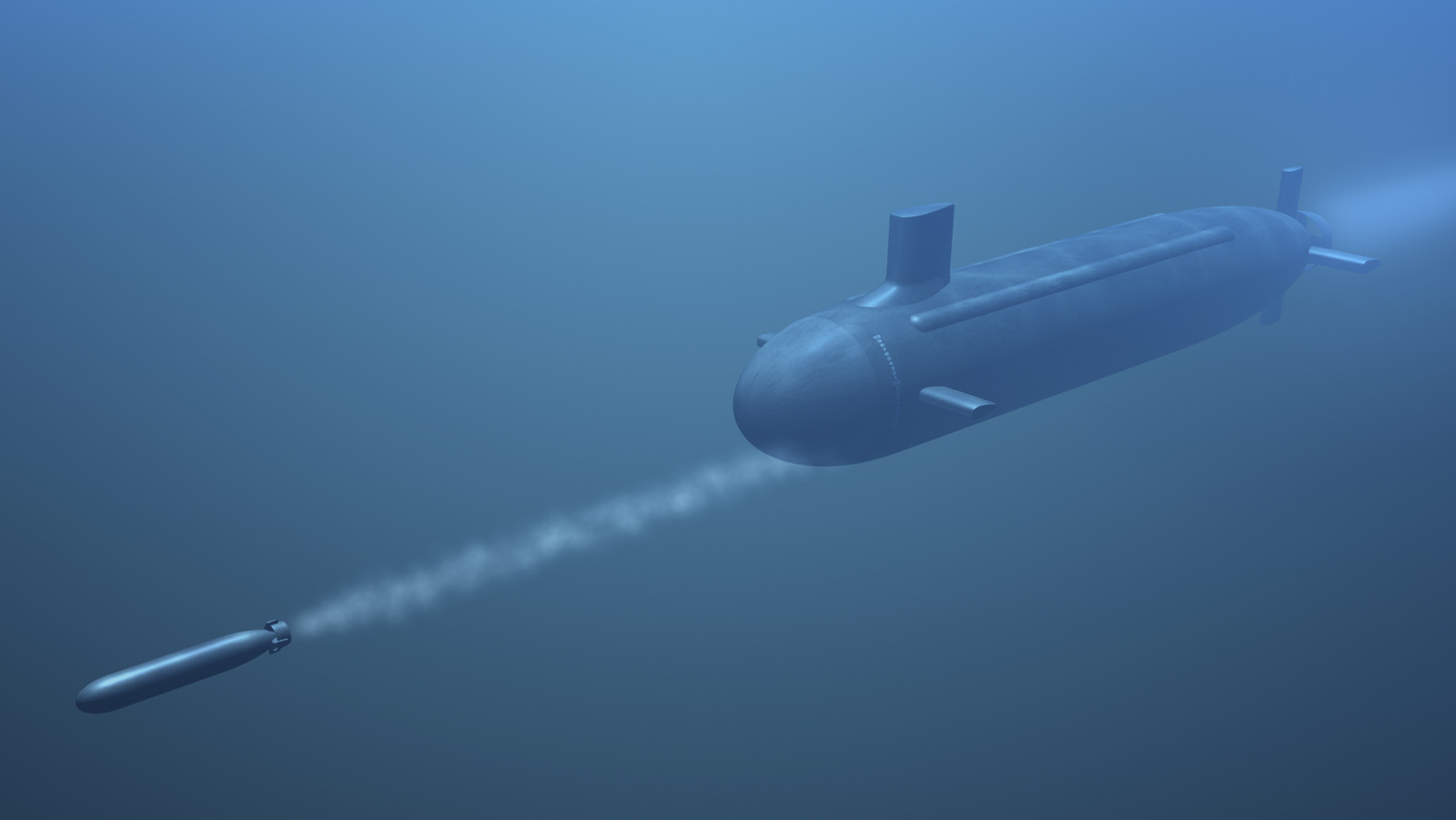
Ever since they started sailing the world’s waterways in the 17th century, submarines have evolved significantly in the years since. Subs are some of the most important naval vessels in any blue water navy, as they can protect surface ships while engaging all manner of threats. They can fire a variety of conventional and nuclear missiles, and are exceptionally adept at evading detection by the enemy. Should a submarine be detected, the most significant threat it could face would be a torpedo.
There are other weapons targeting subs, including depth charges and anti-submarine rockets. Regardless, for the most part, the torpedo is the underwater boat’s deadliest enemy. A submarine is designed to cruise through the water at considerable high speeds, but they’re massive, require a great deal of energy to move, and they have large masts that increase drag. Torpedoes have far fewer limitations to their speed, as they have no mast, are designed to be as fast as technologically possible, and require less energy.
This is fairly well known, but one thing that most non-submariners might not be aware of is whether a submarine can outrun a torpedo. Submarine combat is a complex and nuanced means of fighting, and it’s not as simple as saying yes or no. Were it that simple, it would still be difficult to say one way or another, but looking solely at top speeds of modern submarines vs. the world’s deadliest torpedo produced by the U.S., the latter torpedoes come out ahead. Still, speed isn’t the only factor in submarine warfare.
It’s easy to look at the raw data and conclude that there’s no way a sub could outrun the world’s fastest torpedo. That would be the VA-111 Shkval, used by the Russian Navy: These agile death machines can reach speeds exceeding 230 mph. That’s ridiculously fast when compared to the fastest modern submarine, the Yasen-class operated by Russia: They can reach a top speed of 40 mph. Compared to the Shkval, a Yasen-class boat has no chance of outrunning its fate.
That said, submarine combat involving torpedoes doesn’t mean one boat fires on another directly ahead of it. Instead, the firing sub must first locate its target, which could be thousands of yards distant. By the time the sonar ping returns, the target has already moved. Modern torpedoes can overcome this through their own sensors and other systems. Still, the targeted submarine isn’t going to try to outrun the torpedo in a straight line, and instead will perform a course change after detecting the torpedo’s launch noise.
The sub would then alter its bearing and move at flank speed to try to outrun the torpedo. Since the torpedo wouldn’t turn on its sensors until it neared its target, it shouldn’t be able to locate the sub, as it would be too far from its original position at this point. Of course, it’s not uncommon to fire multiple torpedoes at a target to overcome a sub’s defenses. Still, there hasn’t been a sub vs. sub combat situation involving a sinking via torpedo since 1945, so much of modern combat is simulated.
While modern torpedoes are more than capable of outrunning any and all submarines sailing today, there was one boat that could outrun the torpedoes of its day. During the Cold War, the Soviet Union produced a submarine designed for extreme speed, resulting in the Type 705 Lyra-class. The Soviets constructed seven, and they remain the fastest submarines ever produced and used by a blue water navy. Technically, the K-222 was faster, but it never left the prototype stage.
Lyra-class submarines could exceed speeds of 46 mph, which is exceptionally fast for an underwater object as massive as a full-size sub. During its time sailing the world’s waterways, Lyra-class subs could evade most NATO torpedoes. During the 1970s, the Lyra-class boats would have had to contend with the MK 46 lightweight torpedo, which had a maximum speed of almost 52 mph. While technically faster than the Soviet subs, the difference in speed was far less than what is common in today’s technology.
Just as it would happen today, a Lyra-class submarine would alter its course and move at flank speed to outmaneuver a fired MK 46. Because the United States and the Soviet Union were engaged in a technological arms race, the Lyra-class submarine led to the development of a countermeasure: the MK 48 heavyweight torpedo. These are still in use today, though with numerous upgrades and advancements. When they entered service in 1971, they had a top speed of 63 mph.



